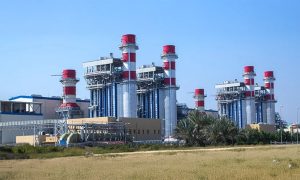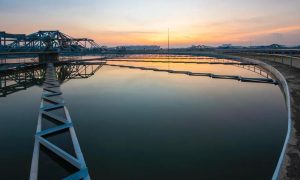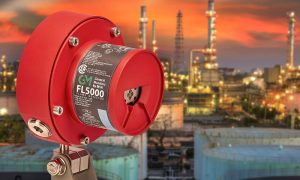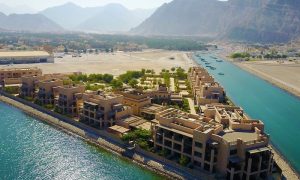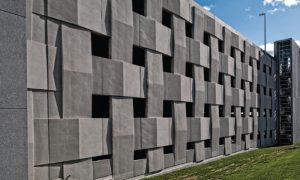Unveiling the vitality of sewerage tunnel construction
With careful planning, innovative thinking, and a commitment to excellence, sewerage tunnels can serve as lifelines for generations to come says ACCIONA’s Fernando Vara Ortiz De La Torre

In the realm of infrastructure development, few projects embody the intersection of necessity, complexity, and innovation quite like the construction of sewerage tunnels. Often unseen and underappreciated, these subterranean arteries form the backbone of modern urban sanitation systems, safeguarding public health and environmental integrity. Yet, the construction process behind these vital conduits is a testament to human ingenuity, perseverance, and the imperative of sustainable development.
Embarking on the construction of a sewerage tunnel is akin to delving into the earth’s hidden realms, a venture fraught with challenges but brimming with opportunities. From initial planning stages to the final commissioning, every step demands meticulous attention to detail, and a commitment to excellence.
At the outset, exhaustive geological surveys and feasibility studies lay the groundwork for informed decision-making. Engineers must navigate through a labyrinth of geological formations, subterranean waterways, and urban infrastructure, all while minimising disruption to the surrounding environment and communities. The selection of appropriate tunnelling methods, whether traditional techniques like cut-and-cover or state-of-the-art technologies like tunnel boring machines (TBMs), is pivotal in ensuring efficiency and cost-effectiveness.
We have designed and built more than 800km of metropolitan, road and railway tunnels in which our innovative efforts have made us a world reference, not only in the construction of these subway mega-infrastructures, but also in the machinery that allows us to make these projects a reality: tunnel boring machines (TBM).
TBMs have become the safest method of excavation in a context of technological advances in geotechnical engineering, improved working conditions inside tunnels and the use of ventilation systems, among other developments. They can reach colossal magnitudes. Lengths of more than 100m, an excavation diameter of 18m and a weight of 2,800t. In other words, they can be as long as nine buses, as tall as a five-story building, and as heavy as fifteen Boeing 747 aircraft.
We have several types of tunnel boring machines (Main Beam, single shield, double shield, earth pressure, hydroshield) to respond to the specific capacities of the terrain in each project. Thanks to the company’s self-performing office (SPO) and in house TBM capabilities, engineers and technicians are able to refurbish the company’s TBMs and adapt these huge machines to any eventuality that the project may present.

ACCIONA also has a Specialised Business Unit with more than 400 experienced engineers working around the world. These people are responsible for the execution of the construction projects, and all that knowledge and expertise is centralised in our Head Quarters in Madrid, where lessons learnt from different projects are compiled and shared among this pool of excellent experienced professionals and tunnel experts. ACCIONA is one of the few companies that has its own Tunnel Boring Machine Control Centre, a pioneering remote storage and monitoring platform where it collects and analyses data obtained in real time by the TBMs thanks to Big Data. The system processes in real time more than four million pieces of data per TBM per day.
The Start of Construction
As construction commences, the site becomes a hive of activity, with teams of engineers, technicians, and laborers working in harmony to bring the project to fruition. Excavators carve through layers of soil and rock, while reinforcement and waterproofing measures safeguard the integrity of the tunnel against the relentless pressure of earth and water. Simultaneously, stringent quality control protocols and safety measures are implemented to mitigate risks and ensure the well-being of all involved.
Yet, beyond the technical intricacies, the construction of sewerage tunnels embodies a broader narrative of societal progress and environmental stewardship. These infrastructural marvels represent a commitment to public health, providing essential services that safeguard communities from the scourge of waterborne diseases. Moreover, by facilitating the efficient conveyance of wastewater to treatment facilities, they play a crucial role in preserving the ecological balance of our waterways and safeguarding the integrity of fragile ecosystems.
Furthermore, in an era defined by the imperatives of sustainability and resilience, the construction of sewerage tunnels offers an opportunity to embrace innovative approaches and technologies. From the integration of renewable energy systems to the utilisation of eco-friendly construction materials, every decision holds the potential to minimise environmental impact, and enhance the project’s long-term viability.
Yet, for all its technical prowess and environmental conscientiousness, the construction of sewerage tunnels is not without its challenges. From budget overruns to unforeseen geological obstacles, each project presents its unique set of hurdles that demand creative problem-solving and unwavering determination. Moreover, in an age of rapid urbanisation and climate change, the imperative to future-proof these infrastructural assets against emerging threats looms ever larger.
In conclusion, the construction of sewerage tunnels is a testament to human innovation, perseverance, and the pursuit of a healthier, more sustainable future. As we delve into the depths of the earth to lay the foundations of modern sanitation systems, let us not only marvel at the engineering marvels unfolding beneath our feet but also recognise the profound societal benefits they bring. With careful planning, innovative thinking, and a steadfast commitment to excellence, we can ensure that these vital conduits continue to serve as lifelines for generations to come, safeguarding public health, preserving the environment, and fostering resilient communities.








